
Polar Shrinkage
The view out my window looks like the opening credits in the movie “Fargo”. I have a pet glacier in my back yard. When I tell my dog (Leo) to go outside and do his business I swear he shakes his head no. “You kidding me?”
It’s so cold I can barely stand the four minutes I’m outdoors every day.
But hope springs eternal. Today the sun is as high in the sky as it was on October 6. Daylight is almost 2 hours and 40 minutes longer than it was on December 21. Daylight saving time kicks off early Sunday morning! Warm air can’t push cold air out of the way. The Polar Vortex has to retreat on its own, a process that will happen slowly, incrementally, during March.
Breaking news: not one subzero low in sight. That’s progress. Last night’s clipper may slow down your morning commute, but I expect good travel weather into Monday, as winds aloft swing to the west, allowing a precious puff of Pacific air to waft into Minnesota. A thaw is likely Friday, again early next week. ECMWF guidance hints at highs near 40F Sunday and Monday. We’ll see more relapses of cold air this month (count on it), but probably nothing polar.
NOAA’s CFS 45 day trend shows 60s the second week of April closer to the Twin Cities. What can possibly go wrong?
Trust me, I’m a weatherman.
* image above courtesy of Climate Reanalyzer at the University of Maine.
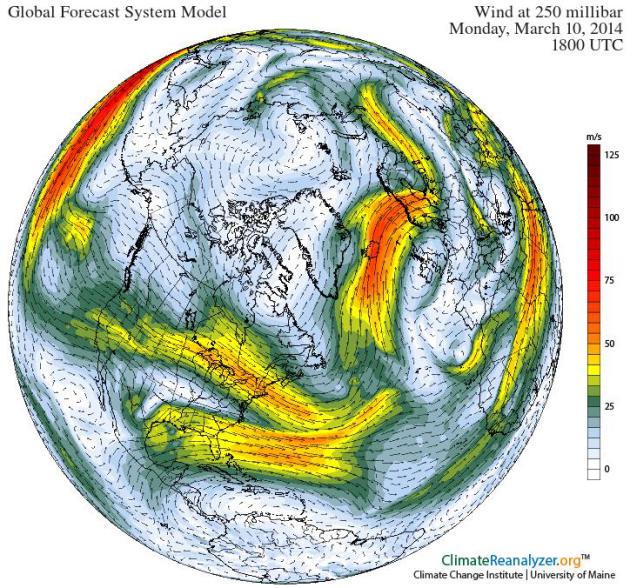
Long Overdue Shift In The Jet Stream. Winds at 250 mb, where the core of the jet stream blows, become more zonal, west to east, early next week, pushing milder, Pacific air across the USA, a blessed hint of spring to come. Map: Climate Reanalyzer.
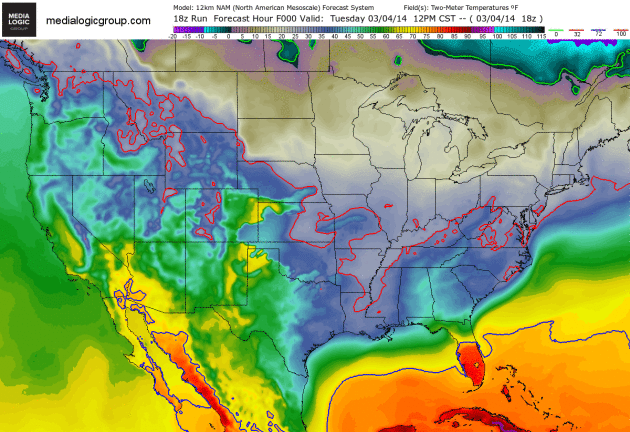
Cheering For The Solid Red Line. Because that red line is the 32F isotherm, pushing into Minnesota by Friday. The February-like airmass gripping much of America east of the Rockies will slowly relax its stranghold in the coming days. 2-meter NAM temperatures courtesy of NOAA and Ham Weather.
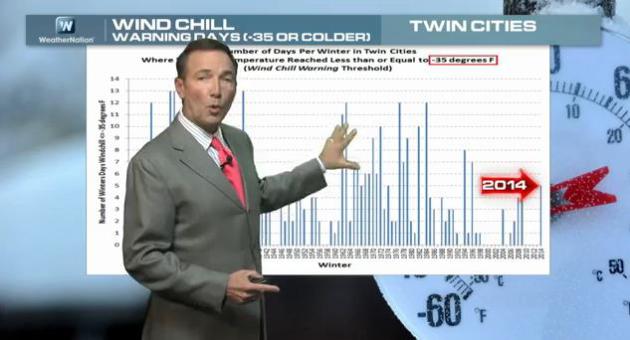
In Search Of Perspective. We all know it’s been a tough winter for much of the USA, but does it really compare with the (savage) winters of the 70s and early 80s? One measure is the number of winter days with a windchill below -35F, dangerous enough for NOAA to issue Windchill Warnings. We had 5 of those this winter. In the 70s and 80s we had a few winters with as many as 10-12 days of Windchill Warnings. 9th coldest meteorological winter for MSP; 50 subzero nights, but no record lows, very few thaws to speak of for 3 straight months. There are other measures, of course: ice on the Great Lakes, the amount of snow that falls, and from Chicago to Detroit locals may be even more sick of winter than we are in Minnesota. That’s the subject of today’s Climate Matters: “WeatherNation Chief Meteorologist Paul Douglas goes over some of the record breaking cold and snow stats from the previous 3 months, which are statistically the coldest months of the year. All time record lows broken… in March? Par for the course the way this winter has been. But in the grand scheme of things, we have seen worse. And folks out west are wondering what all the fuss is about as Alaska saw its 15th warmest winter and Las Vegas saw its warmest winter ever!“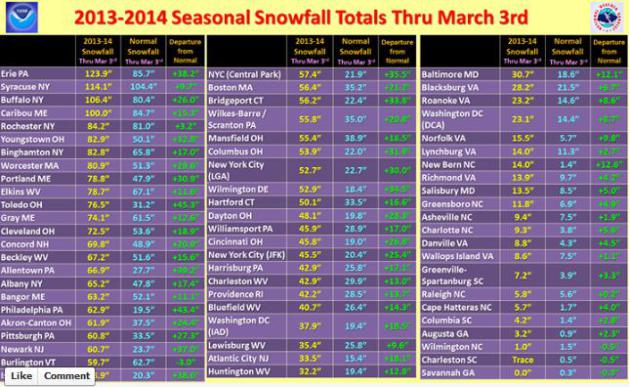
Updated Snowfall Totals. O.K. It’s really an eye test. Click here to get a better view via NOAA and Facebook. Here are a few snowy highlights: “Here is an updated listing of seasonal snowfall totals across the Eastern US. Toledo, Ohio has already broken their seasonal snowfall record. Toledo has received 76.5″ of snow thus far, breaking the previous record of 73.1” in 1977-78.
Other locations are currently in the top 5 snowiest winters are:
Allentown PA (3rd) – record 75.2″ in 1993-94
Cincinnati OH (3rd) – record 53.9″ in 1977-78
Columbus OH (4th) – record 67.8″ in 1909-10
Dayton OH (4th) – record 62.7″ in 1977-78
New Bern NC (4th) – record 19.1″ in 1972-73
NYC-LaGuardia NY (4th) – record 77.9″ in 1995-96
Philadelphia PA (2nd) – record 78.7″ in 2009-10
Wilmington DE (2nd) – record 72.7″ in 2009-10
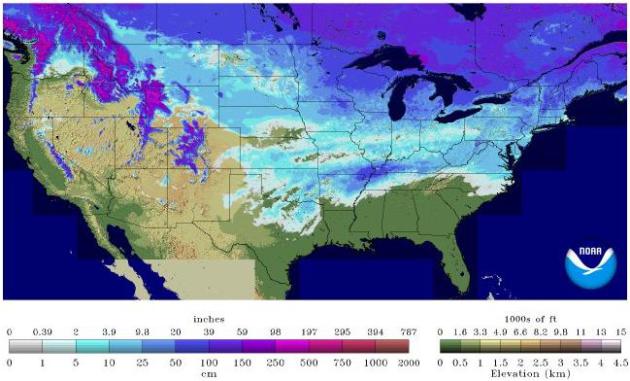
Silent Spring. Old Man Winter is hanging on for dear life, you can see his snowy scratch-marks as far south as Texas and Arkansas, where snow on the ground in early March is rare, but not unprecedented. As of yesterday NOAA reports snow on the ground over 53.9% of the lower 48 states. That’s down from 61.2% of the USA on February 4.

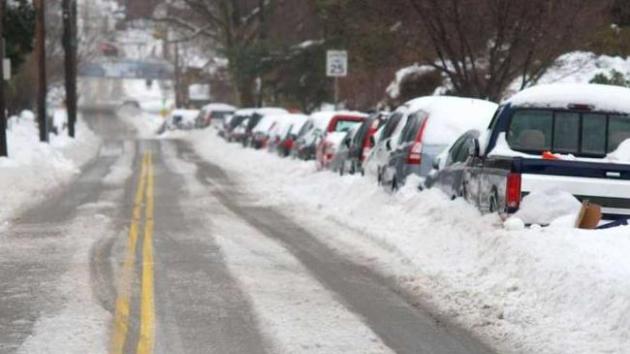
Photo credit above: “Slippery West Sedgwick Street in Northwest Philadelphia afer a recent storm.” Bas Slabbers – NewsWorks.org.

Ice-Covered Lakes May Be Bottling Arctic Cold For Spring. Chicago has had a very memorable winter: 3rd coldest meteorological winter with 74″ snow, more than 43″ above average, to date. They’ve experienced 2 winters in the Windy City! Here’s a recent video and excerpt from The Chicago Tribune: “With March just days away, Chicagoans can’t be blamed for looking forward to the disappearance of the polar vortex. But be warned: with the Great Lakes more ice-covered than they have been in decades, the latest blast of arctic chill is being bottled for spring. The early descent of this season’s chill forced the Coast Guard to start its ice-breaking ships sooner than any time in recent memory and raises the prospect that all that frozen water will slow any hint of a spring warmup...”

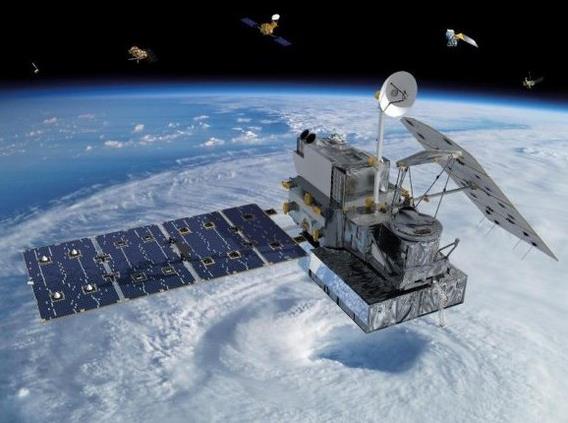
A World Of Water, Seen From Space. Here’s an excerpt of a good description of the latest NASA satellite to be launched into low orbit to study Earth’s water supply, courtesy of The Atlantic and Yahoo Finance: “…NASA calls this latest satellite the Global Precipitation Measurement Core Observatory. I propose we call it, to make things simpler for ourselves, “Core.” Core is, technically, a weather satellite, built to observe the workings of the Earth from beyond its bounds. But it’s more complex than a traditional satellite: Core gets its name from the fact that it is the central unit in a network of nine satellites studded across the exterior perimeter of the Earth, contributed to the cause by various countries and space agenices. Their job? To analyze the planet’s water, from beyond the planet…”
Image credit above: “The GPM Core satellite launches from Japan on Thursday, February 27.” (NASA).
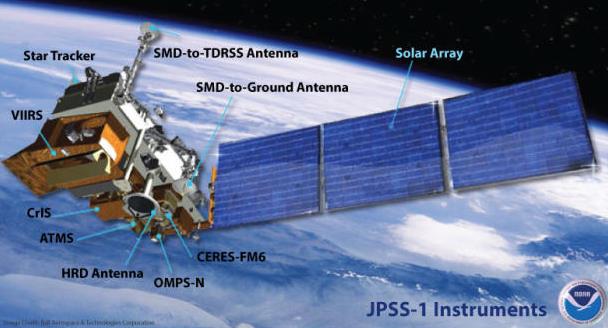
Storm-Tracking NOAA Satellite System Gets A Technology Boost. CNET describes how these new Earth platforms may improve storm predictions by providing higher-resolution data streams into the models we use on a daily basis; here’s a clip: “A three-satellite storm-tracking system run by the U.S. government is getting some updates that will support a complete technological refresh. Raytheon said today that it has booked $185 million in new business for the Joint Polar Satellite System’s Common Ground System. The JPSS, a collaborative system between the National Oceanic and Atmospheric Administration and NASA, is a polar-orbiting environmental system designed to both track storms and other weather events and take and send back to Earth imagery showing changes in the planet’s environment over time…”
Image credit above: “One of the three Joint Polar Satellite Systems satellites.” (Credit: NOAA/NASA).
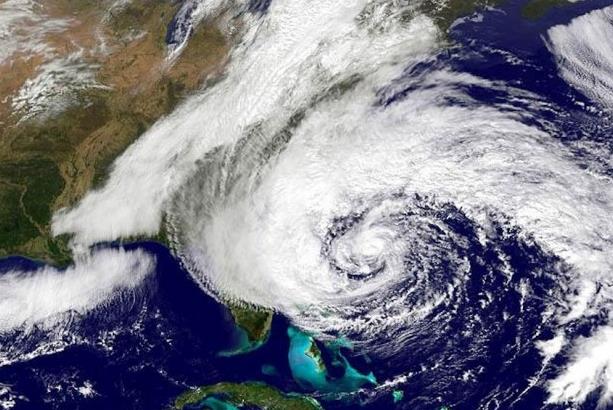
New Hurricane Model Can More Accurately Predict Hurricane Path, Intensity.redOrbit has an interesting story – here’s the introduction: “…In addition to incorporating real-time Doppler radar information, the convection-permitting hurricane analysis and forecasting system (WRF-EnKF) also uses high-resolution cloud-permitting grids, which allow for the consideration of individual clouds in modeling a storm system. “Our model predicted storm paths with 100 km – 50 mile – accuracy four to five days ahead of landfall for Hurricane Sandy,” Zhang said. “We also had accurate predictions of Sandy’s intensity...”
Image credit above: “Superstorm Sandy as it slams the Northeast in October 2012.” Credit: NOAA/NASA.

Oklahoma Congressman’s Proposal Would Extend Lead Time For Tornado Warnings. A 45-60 minute lead time for tornadoes? It’s not as far-fetched as it sounds. But it brings up an interesting dilemma: can you provide too warning? If I have an hour’s notice I might be tempted to run home, or pick up the kids at school – instead of heading to the basement. Here’s an excerpt from Insurance Journal: “An Oklahoma congressman has proposed legislation that would make the protection of people and property a priority for federal weather forecasters and extend the lead time for tornado warnings. Oklahoma Insurance Commissioner John D. Doak has expressed his support for the Weather Forecasting Improvement Act (H.R. 2413), sponsored by Congressman Jim Bridenstine (R-Oklahoma), which would establish the Tornado Warning Extension Program. The resolution is aimed at funding a research program within the National Oceanic and Atmospheric Administration (NOAA) to extend the lead time for tornado warnings beyond one hour…”
Now, a new real-time hurricane analysis system being developed at Penn State University has been shown to accurately predict the track and intensity of the deadly storm.
“For this particular study aircraft-based Doppler radar information was ingested into the system,” said Fuqing Zhang, a professor of meteorology at Penn State. “Our predictions were comparable to or better than those made by operational global models.”
Read more at http://www.redorbit.com/news/science/1113081033/hurricane-model-accurately-predict-storm-path-intensity-022614/#ezvDvxMucTOvdtR6.99Oklahoma Congressman’s Proposal Would Extend Lead Time For Tornado Warnings. A 45-60 minute lead time for tornadoes? It’s not as far-fetched as it sounds. But it brings up an interesting dilemma: can you provide too warning? If I have an hour’s notice I might be tempted to run home, or pick up the kids at school – instead of heading to the basement. Here’s an excerpt from Insurance Journal: “An Oklahoma congressman has proposed legislation that would make the protection of people and property a priority for federal weather forecasters and extend the lead time for tornado warnings. Oklahoma Insurance Commissioner John D. Doak has expressed his support for the Weather Forecasting Improvement Act (H.R. 2413), sponsored by Congressman Jim Bridenstine (R-Oklahoma), which would establish the Tornado Warning Extension Program. The resolution is aimed at funding a research program within the National Oceanic and Atmospheric Administration (NOAA) to extend the lead time for tornado warnings beyond one hour…”

Reality Check: The Tornado “False Alarm” Problem. The last I checked 70% of tornado warnings were false alarms, nationwide. It’s always better to err on the side of safety, caution and protecting human life, but too many false alarms and the public can be apathetic. “They’re crying wolf again – just ignore the sirens”. Here’s a video clip and excerpt from a story at fox19.com: “It has been a crazy winter, filled with snow and bitter cold. Mother nature trumped the winter weather on Thursday with the first severe weather episode of 2014. The National Weather Service issued five tornado alerts. Only three weak funnels appeared -three out of five with a false alarm rate of 40 percent. Why does the Tornado Warning policy treat weak, spin-up funnels the same as it does monstrous killer tornadoes? The policy is set at high levels in the National Weather Service bureaucracy. The system needs to be fixed...”

Tornado And Severe Storm Watches Issued In 2013. Last year was relatively quiet, especially for tornadoes, with a few notable exceptions (around Oklahoma City). The upper left graphic shows the total number of tornado watches, the lower left depicts departure from the 20 year averages – showing a slight increase in tornado watches over the Middle Mississippi Valley and Mid Atlantic. The column on the right shows total number of severe storm watches (upper left), and departure from average, with a more significant spike in severe storm watches for the Plains. Source: NOAA SPC.
Climate Stories….

Energy CEO: Climate Change Is Real, Driven By Humans. I almost fell off the Doppler after reading this story at fuelfix.com; here’s an excerpt: “BHP Billiton CEO Andrew Mackenzie, who leads the world’s largest mining company, said Tuesday that climate change is real and driven by human activity. Speaking to energy industry leaders at the CERAWeek conference in Houston, Mackenzie, a geologist by training, said evidence of the climate trend is clear and compelling. “You can’t argue with a rock,” Mackenzie said, noting geological signs of the change. Mackenzie — whose Australia-based company produces oil, gas, coal and uranium — also advocated for the creation of a carbon pricing system that would enable the market “to identify the most cost-effective methods of cutting emissions...”
Photo credit above: “BHP Billiton CEO Andrew Mackenzie speaks at the IHS CERAWeek energy conference in Houston on March 4, 2014.” (Mayra Beltran/Houston Chronicle).

The Defense Department Takes Climate Change Seriously. The Navy is concerned about projecting power in a rapidly melting Arctic, and implications of higher sea levels on their major ports of Norfolk and San Diego. The 88 page PDF of The Department of Defense Quadrennial Defense Review 2014 is here. Navy Admiral David Titley (retired) writes: “For all the defense policy geeks … DoD released today the 2014 Quadrennial Defense Review — climate change and its impacts to national security highlighted throughout. About as good as it gets from a high level policy document.”
* more details on the implications of rising seas and increased climate volatility on the military at The Center for Climate & Security.
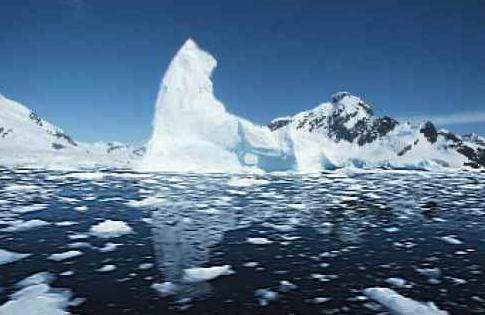
Climate Study: Rising Seas Could Wipe Out Many Cultural Landmarks. LiveSciencehas the story – here’s a clip: “…Sea-level rise has been a key concern for climate scientists, but making precise projections of how much, and how fast, sea levels may rise remains tricky. As water heats up, it expands and takes up more space, which causes sea levels to rise. Furthermore, rising surface temperatures trigger melting ice, particularly in the sprawling ice sheets that cover Greenland and Antarctica. It is difficult to make accurate predictions of how much sea levels may rise, but Marzeion said it is generally thought that for every 5.4 degrees F of warming, sea levels could rise nearly 23 feet (7 meters)…”
____________________________________________________
Welcome to the WeatherNation blog. Every day I sift through hundreds of stories, maps, graphics and meteorological web sites, trying to capture some of the most interesting weather nuggets, the stories behind the forecast. I’ll link to stories and share some of the web sites I use. I’m still passionate about the weather, have been ever since Tropical Storm Agnes flooded my home in Lancaster, PA in 1972. I’ve started 5 weather-related companies. “EarthWatch” created the world’s first 3-D weather graphics for TV stations – Steven Spielberg used our software in “Jurassic Park” and “Twister”. My last company, “Digital Cyclone”, personalized weather for cell phones. “My-Cast” was launched in 2001 and is still going strong on iPhone, Android and Blackberry. I sold DCI to Garmin in 2007 so I could focus on my latest venture: WeatherNation. I also write a daily weather column for The Star Tribune startribune.

